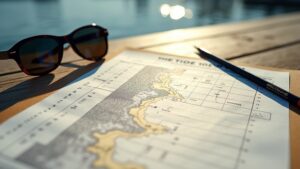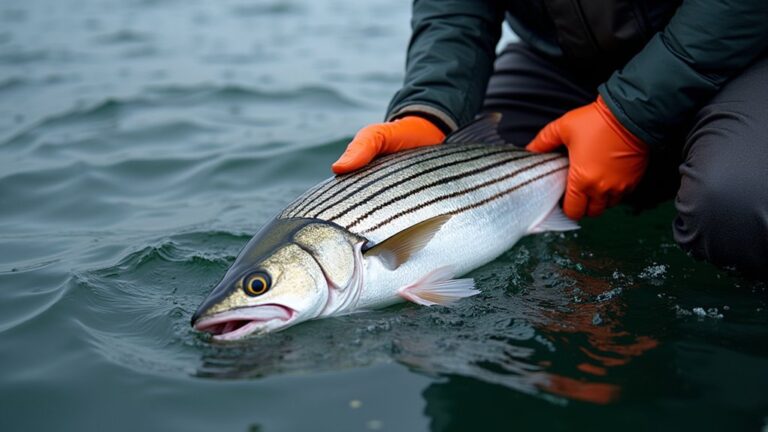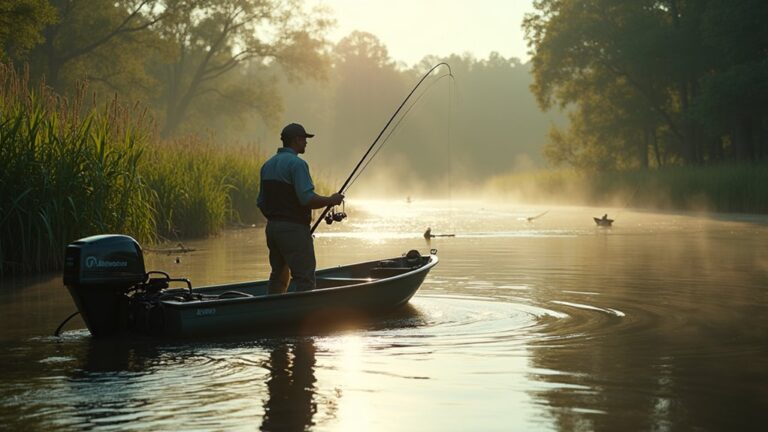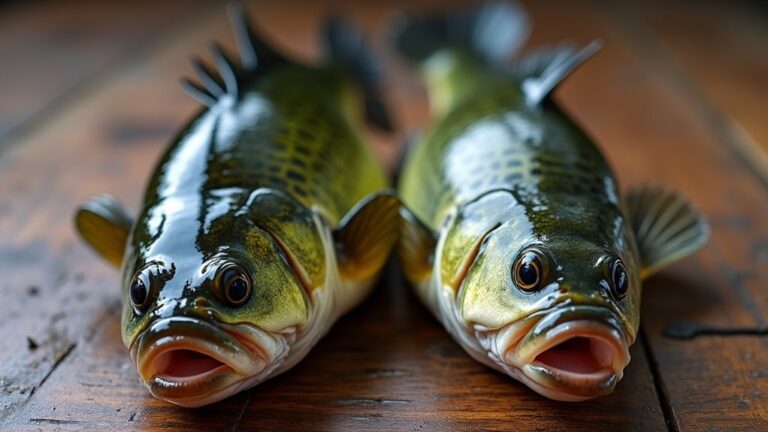You can learn tide charts quickly so you time bait and current. Tides are driven by the Moon and Sun and show predicted high and low times and heights for a specific station; note local time and reference (usually MLLW). Check whether the next tide is rising or falling to pick shore, channel, or slack windows. Factor in tidal range, wind, and local features like passes. Keep charts and real-time station data handy, and if you want, keep going to pick up strategies and examples.
Important Takeaways
- Locate your fishing station on the tide chart and note the predicted high and low tide times and heights.
- Compare consecutive tide times to determine whether the tide is rising (flood) or falling (ebb).
- Check tidal range (height difference) to estimate current strength and likely bait movement.
- Use moon phase and charted peak currents to identify more aggressive feeding windows.
- Cross-check tide predictions with local real-time data, wind, and pressure before finalizing your fishing plan.
What Are Tides and What Causes Them
Ever wondered why the water around coasts keeps rising and falling every day? You’re watching tides: the daily rise and fall of bays, gulfs, inlets, and oceans driven mainly by the Moon’s pull and, to a lesser extent, the Sun. Gravity from those bodies shifts water, so most places see two high tide and two low tide cycles each day, though some spots get just one of each. High tide happens when gravitational forces align to push more water toward the coast, raising levels; low tide follows when forces pull water away. The tidal range—the height difference between high tide and low tide—varies by location and day, influenced further by coastline shape, wind, and atmospheric pressure. Proper preparation and attention to freshness will improve your fishing and dining experience.
Tide Phases and What They Mean for Fishing
Now that you know what causes tides and how they cycle, let’s look at how each phase affects fishing. You’ll use tide phases to decide when and where to cast. A rising tide brings a flood current that moves water—and bait—toward shore, so target shallow flats and structure. A falling tide creates an ebb current that often pushes fish toward channels and drop-offs. Slack tide is the calm window between high and low when movement slows and bites can be sluggish. Moon phase can amplify these effects, so stronger rising tide and falling tide currents mean more aggressive feeding. Overcast conditions and reduced light can extend feeding into shallower areas during favorable tide phases.
| Phase | Fishing focus |
|---|---|
| Rising tide | Flats, structure |
| Falling tide | Channels, drop-offs |
| Slack tide | Patience, deeper holds |
How to Read a Tide Table or Chart
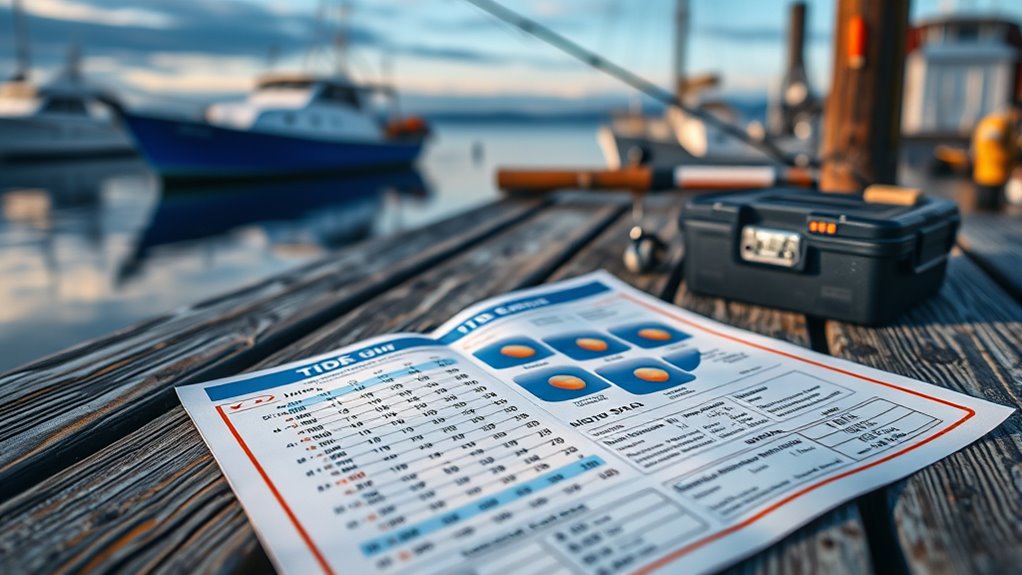
A tide table or chart gives you the predicted times and heights of high and low tides for a specific station, so check the dates and local station data (NOAA or a trusted regional source) before you head out. You’ll read each day’s entries showing the local time and height referenced to Mean Lower Low Water (MLLW). Note whether the next listed tide is a high tide or low tide, and watch the sequence to tell if the water’s rising or falling. The tidal range—the height difference—signals how much water movement to expect. Remember predictions can shift with wind, pressure, or local geography, so use the table as your baseline and verify nearest-station data for the most reliable planning. Consider pairing tide-chart planning with structure targeting to pick spots where tidal movement concentrates bait and fish.
Using Tide Predictions to Plan a Fishing Trip
Having read the tide chart and confirmed the station and times, you can use those predictions to schedule your fishing so you’re on the water when the bite is most likely. Use tide predictions to note upcoming high and low times for your spot, recording date and station. Identify whether each predicted time shows a rising tide or falling tide so you can anticipate moving water and likely bite windows. Compare predicted heights to judge tidal range and how much water will shift at your location. Build a fishing plan targeting the better windows, then cross-check predictions with real-time sources like NOAA, local tide stations, or charters to factor wind and weather. Adjust your plan if conditions differ.
Best Tide Timing for Different Fishing Strategies
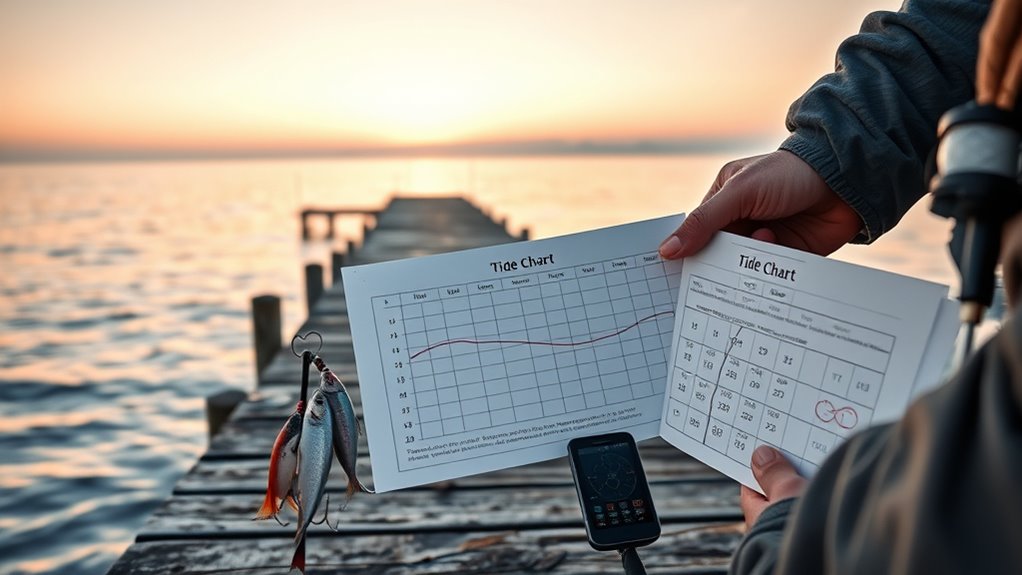
When should you time your trip for the best return on effort? Plan around tide times so you hit peak feeding windows: fish the rising tide about an hour before high tide when flood currents push bait toward shore. Switch tactics to the falling tide about an hour after high for structure-oriented bites as water retreats. Avoid slack tide for primary effort; use it to reposition. Watch current speeds and local charts to refine timing near channels and passes. Be sure to check your kayak’s weight capacity before loading gear for a tide-driven outing.
| Strategy | Best phase |
|---|---|
| Nearshore feeding zones | Rising tide |
| Channels & ledges | Falling tide |
| Transitioning trips | Slack to rising |
| Big current areas | Time to peak current speeds |
Local Factors: Bays, Passes, and Wind Effects
How do local features change the tide game? You’ll learn that bay systems respond to tides, wind, and orientation, so a tide chart alone can’t tell the whole story.
Focus on passes: they control how much and when Gulf water exchanges, so predictions near passes are more reliable than farther inland.
Inland marshes away from passes often show minimal moon-driven tide action, so fish movements depend more on wind-driven flow.
Wind effects can override charted tides—sustained southerly winds raise bay levels and push bait, while northerly winds can create marsh “drain days.”
Calm, flat water usually hurts the bite; look for current from tides or wind to concentrate bait and trigger feeding along channels and pass mouths.
Passes and channels also shape where predators hunt by concentrating baitfish in predictable currents, making them prime spots to watch for current funnels on your next trip.
Sources for Reliable Tide Information
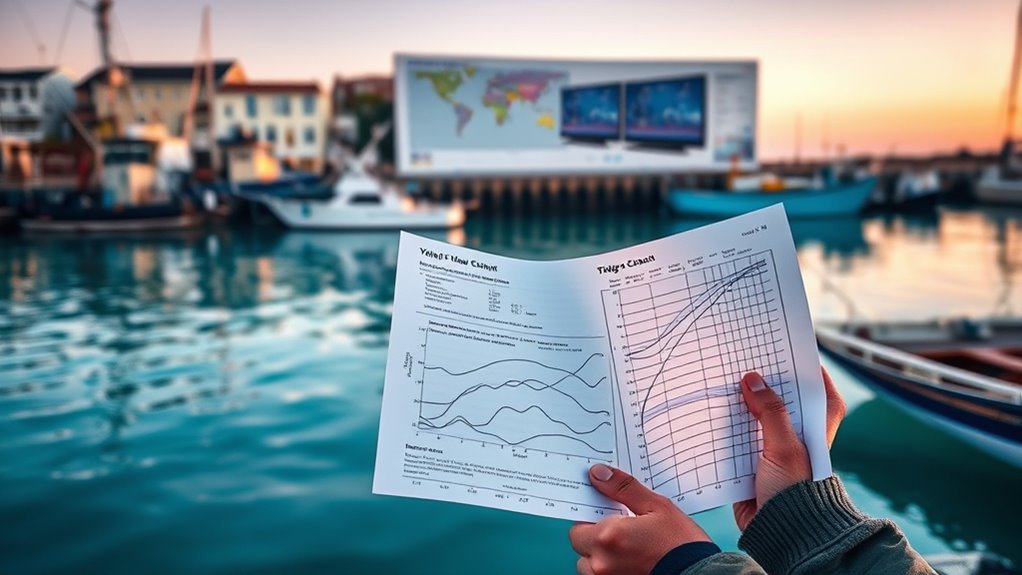
Where should you go for dependable tide info? Use NOAA’s resources first: CO-OPS offers tide predictions for over 3,000 U.S. sites, with daily highs and lows, times, and heights. The Tides & Currents site lets you view and download past and future predictions up to two years, plus tide charts showing hourly water levels. For spot-specific planning, check real-time data from NOAA and local sensors since weather can alter predictions.
| Source | What it gives |
|---|---|
| NOAA CO-OPS | Official tide tables with times/heights |
| Tides & Currents | Downloadable predictions, charts |
| Local stations | Real-time data, spot adjustments |
Combine tide tables, charts, and real-time data for the most reliable picture.
Quick Practical Tips for Tide-Based Fishing
Want better hookups on your next trip? Read tide tables for your spot and the dates you’ll fish, using NOAA or trusted local sources for precise highs, lows, and tide range.
Fish the rising tide about an hour before high tide when water moves toward shore and baitfish are active; predators follow.
During the falling tide, target structures and drop-offs about an hour after high tide as fish get pushed toward cover.
Avoid slack tide—the brief switch between rising tide and falling tide—since bites slow.
Mark your calendar with exact high tide times, plan arrival and departure around those productive windows, and adjust lures and presentation for current strength to maximize hookups.
Also confirm your planned trip with a reliable navigation GPS and carry redundant safety gear in case conditions change.
Final Thoughts
Tides shape your saltwater fishing success, so use them. Watch tide phase and flow speed, read tide tables and local charts, and factor in geography and wind. Plan trips around incoming and outgoing flows that suit your target species—strong current for predators, slack for bait presentation—and check reliable local sources and realtime updates. Stay flexible, observe conditions, and prioritize safety. With practice, reading tides becomes second nature and noticeably improves your catch rate.

